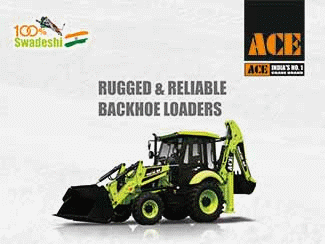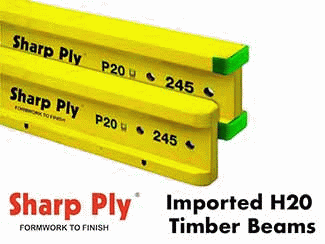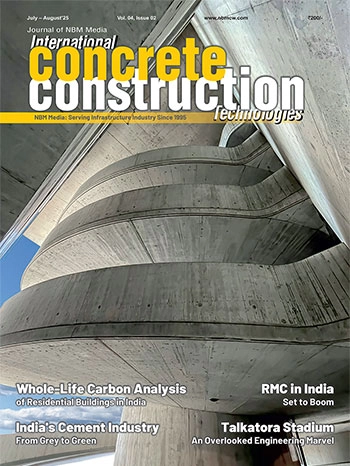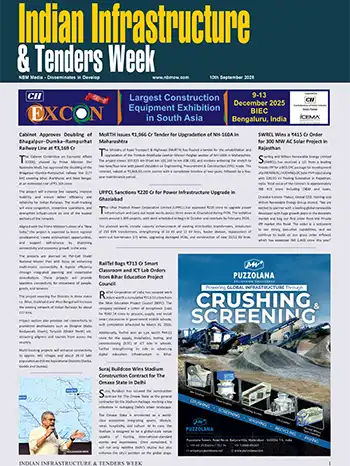Green Sand Production Techniques - Mitigating Environmental Hazards of Sand Processing
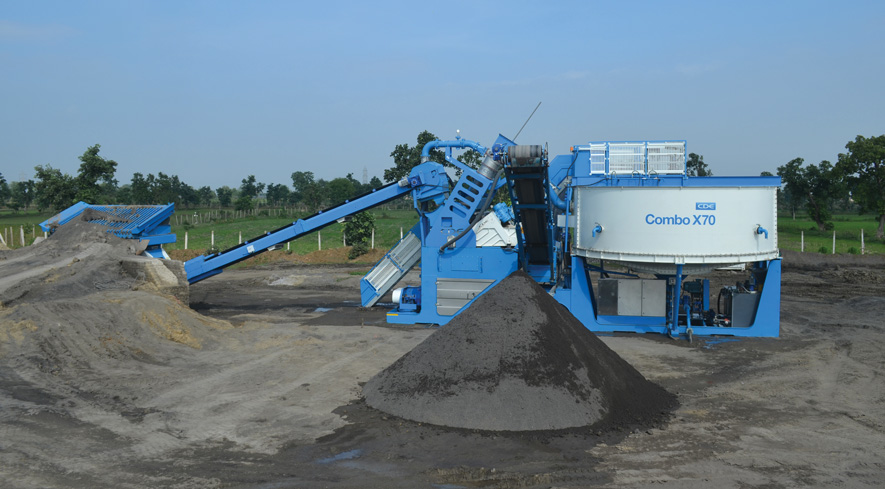
Introduction
With the severe space constraint, an ever increasing population and diminishing natural resources, "Going Green" is the only way of sustainable development. Mining, Manufacturing, Engineering and Construction industry which form the bed rock of any developing economy in the world cannot ignore the concept of "Going Green" specifically when it comes to conservation of energy, water and natural resources through usage of alternative and natural ways of raising resources etc. Additionally protection of environment through adoption of appropriate technology is one of the main issues today in industrial practices.The complexity of modern day concrete constructions coupled with the shortage of river sand due to various legislations against their rampant extraction, has led to a serious search for alternatives for quite sometime. A lot of research has been undertaken by the industry and reputed institutes on Manufactured Sand produced by different methods as an alternative to river sand. It has been established that particle shape, proper gradation, silt content and absence of deleterious ingredients are some of the major factors for accepting this sand for the construction industry.
Thus, washed Manufactured Sand (M-sand) has now come to be accepted as an adoptable alternative to river sand. These require rocks to be suitably processed through crushing and washing to meet the industry standards. The age-old sand production techniques are inaccurate, wasteful, and not able to meet the current stringent demands. Furthermore, the techniques are not able to meet the pollution control norms because of their inherent limitations. New methods for sand washing have been developed, which are versatile, highly efficient, and non-polluting.
Impact of washed Manufactured Sand on concrete properties
It is well known that concrete is the main engineering material for construction. Concrete is a mixture of cement, coarse & fine aggregates and water. It has high flexibility and is formable in the initial stages, and becomes hard after setting. It is akin to steel as construction material.
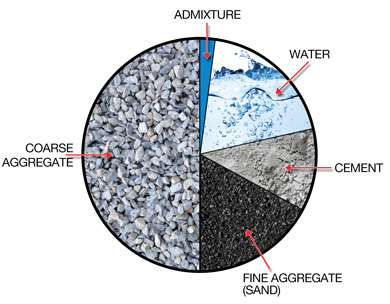
Various types of crushed rock fines have been trying to pass as M-sand, however, they are not suitable for construction, for various reasons. Initially, crushed fines were being used as a replacement if river sand was not available, but was soon given up because of inconsistent quality, presence of deleterious fines, and high level of silt, clay etc. However, significant amount of work has been undertaken since then by various laboratories & agencies on the concrete making properties of washed M-sand, and comparing it with conventional river sand, it has been clearly brought that:
- Mortars with washed M-sand exhibit better workability & water retentivity characteristics
- Compressive strength of mortars with washed M-sand is higher than with river sand.
- Concrete with washed M-sand possesses higher strength (compressive & flexure) when compared with river sand.
- Washed M-sand concrete & river sand concrete exhibit similar stress strain behaviour, but M-sand possesses better bond between concrete & rebar.
- It has also been established that by using washed M-sand the cement consumption is at least 5-6% less for the same level of strength in concrete.
The use of wet processing technology for sand production is an established process across the world. It allows one to increase the efficiency of concrete production by giving a sand product with greatly reduced volumes of material in the minus 74 micron range. When considering the sand fraction, the wet process is required for a number of reasons:
- Removal of clays and silt to ensure that final sand products meet the required product specifications
- Dewatering of the sand slurry to remove excess water and allow for the final product output to be sold or used in downstream processes as quickly as possible.
Some of the most common equipments applied in sand washing operations are classifying tanks, sand screws and bucket wheel classifiers.
Classifying tanks
Classifying tanks accept material from aggregate screening phase and operate using gravity as the means of separation. The material enters a large classification tank which is also fed with a non-stop supply of fresh water to ensure a continuous overflow. The principle of the classifying tank is that the heavier sand particles fall to the bottom of the tank while the very fine particles overflow and are removed. The sand product is then discharged from the classification tank to a sand screw where the product is dewatered and sent to stockpile.
Classification tanks introduce a number of limitations to the process. These systems require large volumes of water in order to ensure the continuous overflow to remove the excess minus 74 micron material. Classification tanks also require a significant amount of space on site and as a result of their size they can take a long time to install and commission. The use of gravity as the means of separation is also not ideal as it is not an accurate process – meaning that some of the plus 74 micron material report in the fines in order to ensure that the product is free of fines. Additionally, the product has high moisture, unsuitable for immediate use in the next process.
Sand screws & Bucket wheel classifiers
Sand screws accept material either directly from the aggregates screening operation or fed from classification tank, as discussed above, in applications where there is excess fine material in the minus 74 micron range which needs to be removed.
Sand screws employ Archimedes screw principle to achieve dewatering of sand product. The operation of the screw pushes the sand fraction up the elevated chamber while the water and the finer particles pass out through the overflow weir. The overflow weir which is nearer the feed point provides the mechanism for fines removal.
In Bucket wheel classifiers sand slurry is introduced to the bucket wheel near the wheel, where the coarse sand settles and is lifted by the rotating wheel. The rotary bucket elevator scoops up the sand from the tub and on its way to delivery, drains water from the sand.
The limited capacity at the feed point of these technologies means that control over the volumes of water required for accurate material classification is very limited. As a result of not being able to use sufficient volumes of water, fines are not efficiently removed. Thus final sand product is not optimized for concrete production. Excess fines in sand means increased cement volumes during the concrete production process which adds significant cost to the operation. Additionally, quality sand is lost over the overflow weir and is sent to settling ponds or water treatment phase.
There are a number of negative impacts on plant operation as a result of this:
- Substantial loss of 100-300 micron fractions along with overflow makes the sand product coarser and it is unable to meet the required specification for use in concrete,
- By sending good quality sand to settling ponds or water treatment phase there is revenue loss by sacrificing good material in order to maximize removal of minus 74 micron fines. Such process typically requires reprocessing of waste material – bringing significant operational costs through the unnecessary double handling of material,
- The time required for clearing out settling ponds to recover lost material requires unnecessary plant downtime – harming the overall productivity, efficiency and profitability of sand & aggregates processing operations,
- By sending excess material to settling ponds, considerably more space is required to accommodate them,
- The classification inefficiencies increase as the proportion of fines in feed material increases,
- The sand product has high moisture content typically between 23 to 30%. It could also be higher if treating finer material. The result of this is that sand product needs to be stockpiled for a considerable amount of time before it can be sold. This calls for double or triple handling and also delays in final sales & revenue generation,
- There are also additional health & safety risks associated with the fact that the screw/wheel mechanism is uncovered - posing an unnecessary risk to the health & safety of the site personnel.
- Large footprint which requires a wide layout requiring higher capital cost,
- High unit consumption of power & water,
- High manpower requirement,
- Limitations in plant capacity utilisation due to poor sludge handling systems,
- High operating cost per tonne of product,
- Not environment-friendly in terms of power & water utilisation.
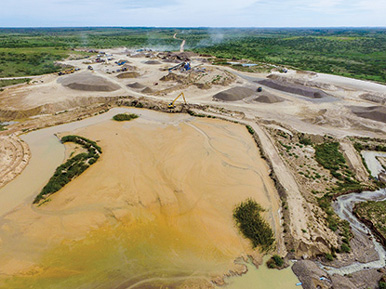 |
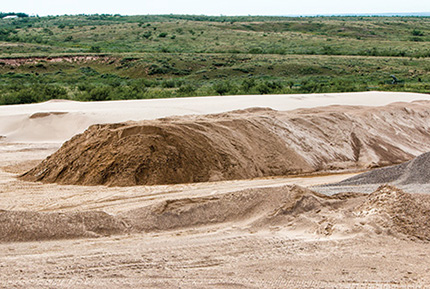 |
| Excavator recovers material from large settling ponds used in older design of washing plants | Material wasted in settling ponds can be reprocessed to recover sand |
Taking all of this information into consideration, it is possible to quantify the loss of revenue from sand washing operations employing classifying tanks and sand screws. As an example, let us consider a 100-tons-per-hour sand washing plant, operating for 3,000 hours (10hrs per day for 300 days) per year and generating 300,000 tons of annual production.
Actual site estimate of the sand loss from sand screws & bucket wheel classifiers could be considered as atleast 4-5 percent of production. This equates to 4-5 tons per hour or 12000-15000 tons per year to the settling ponds. Of course, operators tend to re-process this material to recover the material, but what also must be factored in here are the costs of re-processing. Additionally, plant shut down would be necessary to clear the ponds for recovering the sand. This is a perpetual problem and certainly calls for remedial action.
Revolutionary CDE engineering: all-in-one mobile solution.
The world is increasingly witnessing a strategic shift by quarry and mine operators. They recognise that to gain an edge over their competitors they need to offer the best quality sand to their customers as the modern day builders require sand within very tight specifications. The old technologies are no longer applicable in sand manufacturing as there has been a major shift in the construction industry scenario. The cultural outlook of the society has also changed towards mining & quarrying activity as it is considered as one of the biggest polluters of environment. Thus, washing plants have to operate within strict environment-friendly ways following zero discharge norms with no pollution of the atmosphere either from materials or from noise etc.
To increase return on investment, construction companies are increasingly adopting manufactured sand to reduce cement consumption and faster delivery of projects through quick setting concrete. Hence, they prefer to invest in more efficient sand washing systems such as the popular COMBO plants. These new generation of sand washing plants have been developed in Europe in the last two decades with unique design features, which has taken note of the above mentioned deficiencies of the existing plants and also addressed the constantly changing requirements of the construction industry to a great extent. Some of the unique features of these are:
- mobile and compact,
- advanced no-spill transfer points,
- high quality components and reduced maintenance,
- offer a simple, one-touch solution.
Mobile washing systems have revolutionised the sand and aggregate washing industry in terms of efficiency, allowing customers to wash even the dirtiest of sands and aggregates thanks to its pinpoint accuracy in silt and clay cut points (usually around 75 to 63 micron).
The unique COMBO plants comprise:
- pre-screening,
- single or double stage fines washing unit using hydrocyclone (instead of spiral classifiers),
- high efficiency product dewatering screens,
- with water recycling and sludge management in one compact chassis.
The water recycling and sludge management unit mounted on the same chassis enables user-friendly water management on site that recirculates 95% of water from the sand washing process immediately for reuse. The water recovery system includes highly efficient water recyling unit along with the revolutionary EasySettle technology for faster settlement of the sludge so that more water could be recovered at the earliest. The technology involves addition of special flocculants to the sludge stream from thickener underflow, which modifies the solids in such a way that entrapped water is immediately released and thereby the slurry density increases significantly. Additionally, the solids now would not absorb water and hence can be left in the open. Thus, it enables quick removal of settled solids as they are quite dry and make the settling pond availability much higher. The water recovery now is almost 95%. The overall plant availability has increased significantly, higher than 90%, and this well compensates the cost of additional chemicals.
Paying particular attention to quality, performance and resilience, all transfer points, pumps and pipes are rubber-lined for maximum wear resistance, screening media use high wear life PU panels and features a high frequency dewatering screen design. Each machine is developed, made to order and tested at the factory to satisfy every requirement set out by the client.
As may be seen, this new age plant & technology
- can produce both concrete and plaster sand as per specifications,
- correct level of moisture in product for concrete making,
- high product yield (no loss of sand),
- require minimum footprint,
- low unit power & water consumption,
- water recycling and sludge management functions ensure almost 95% water recovery and zero liquid discharge from the plant area,
- Reagents used during water and sludge treatment are high molecular weight organic compounds and widely used in drinking water treatment. They are eco-friendly in nature and do not cause any harm to the enviroment.
- the noise levels during operation are well below 80db,
- the sludge is recovered from the wastewater as a by-product and could be used for producing bricks and blocks, recovering almost 100% of the material in a usable state.
Conclusion
- Washed, Manufactured Sand (M-sand) can provide a viable alternative to the harmful practice of river sand mining.
- Modern day construction requires sand with stringent specifications
- Older design washing plants cannot make proper Manufactured sand (M-sand).
- Older design washing plants are an environment hazard. Water is wasted and wastewater destroys human lives.
- Older design washing plants are unable to cope up with the requirement economically as they have low productivity.
- CDE has developed a unique technology i.e. the COMBO plant, which addresses all the shortcomings of older washing plant design and ensures 95% water recycling, zero liquid discharge, and operation within specified sound level.
- The COMBO plant is a zero waste plant that makes it possible to use all fractions of the raw material.






